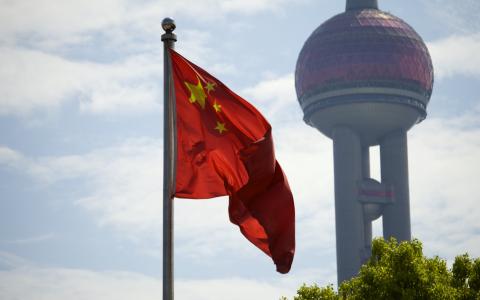
(Bloomberg) - A word of warning for traders who’ve been pouring billions into Chinese-stock ETFs like never before: The strategy is not only prone to big reversals, it has also lost a cohort of ill-timed investors a fortune over the past decade and counting.
While these exchange-traded funds have rallied at times, creating short-term trading opportunities, their performance over the long haul has made them some of the biggest wealth destroyers among US ETFs. Over the past decade in fact, Chinese ETFs rank alongside the flagship fund of Cathie Wood — the onetime star money manager whose stock bets have floundered since the pandemic — in producing the biggest erosion of asset value for US ETF investors, according to data compiled by Bloomberg.
“They’re trading vehicles, rather than investing vehicles,” said Todd Sohn, an ETF strategist at Strategas. “So if you wanted to play China and chase this move, just be aware that historically it’s one of the most volatile equity markets out there and it has a history of giving back a lot of the gains.”
The KraneShares CSI China Internet Fund (KWEB) has taken in more than $12 billion since its inception in 2013 on a net basis. Typically, inflows like these would be accompanied by rising asset values from increased investment and price appreciation. But in this case the underlying value of holdings deteriorated so much that the fund was worth just $7.7 billion as of Friday — almost $5 billion less than what investors put into it.
The KWEB valuation gap trails only Wood’s ARK Innovation ETF (ARKK) among 415 of the largest US-listed stock ETFs, the data show. By contrast, the SPDR S&P 500 ETF Trust (SPY) has rewarded investors the most by this measure, with $159 billion net inflows turning into $593 billion in assets.
This way of looking at fund performance — which follows a similar methodology as was used in a study by Morningstar earlier this year — isn’t as intuitive as tracking total returns, but it can provide powerful insights. By comparing fund flows and the value of assets under management, one can have a better understanding of how many investors have fared. An ETF may have a positive, say 100%, return, over 10 years, but if most investors buy at the top, they could still suffer steep losses.
Three of the four largest China ETFs have had assets fall below accumulated inflows. One, the iShares MSCI China ETF (MCHI), has fallen short by $1.7 billion, putting it among seven of the biggest ETFs that saw losses of more than $1 billion, according to data compiled by Bloomberg. Meanwhile, the iShares China Large-Cap ETF (FXI), the largest of its kind in the US, barely managed to avoid a loss over its two decades of existence, with its current assets of $10.9 billion slightly outpacing the $10.7 billion inflow, the data show.
To a large degree, the gap between accumulated inflows and assets in Chinese ETFs is about timing. These funds have exhibited swings, often tempting investors to pile in at what later turned out to be just the wrong time.
“Timing China’s rebound and stimulus has been difficult, though investors’ patience is finally being rewarded,” said Brendan Ahern, chief investment officer at Krane Funds Advisors LLC, which oversees KWEB fund.
A spokesperson at BlackRock, which oversees the two iShares China ETFs – FXI and MCHI — didn’t respond to a request for comment, nor did a representative for ARKK.
A majority of KWEB’s inflows happened in 2021, when Chinese shares surged at first amid optimism that China’s economy was on track for a swift recovery from the 2020 pandemic. Then, a deepening housing crisis and President Xi Jinping’s crackdown on various industries sent the market reeling. As Chinese share prices cratered, dip-buying investors kept adding to KWEB, only to see holdings losing value further. That year, the ETF tumbled 52%, even as investors poured in a record $7.4 billion.
The crowds buying in to the Chinese ETFs mimicked those investing with Wood, who catapulted to fame amid the Covid-19 lockdowns for her bold calls on popular pandemic plays like Tesla Inc. ARKK, her flagship fund, took in $4.6 billion in 2021 and has seen some 70% of its value wiped out from its peak since then.
“People entered the trade at bad levels,” said Brent Donnelly, president of Spectra Markets.
Fast forward to today. Beijing’s stimulus blitz starting in late September – including interest-rate cuts and the central bank’s pledge to provide liquidity to the stock market – prompted the MSCI China Index to shoot up 36% in less than three weeks.
The enthusiasm also sparked record inflows into Chinese funds. Investors plowed $6 billion into the FXI fund over the past month, the fourth-most among all ETFs in America. The KWEB fund, which follows tech and internet companies, attracted $2 billion.
The rally in Chinese shares has already lost some steam, though, in the face of the significant challenges still ahead in addressing the headwinds facing China’s economy.
Even after the recent market surge, China stocks remain one of the biggest laggards among global markets over more than a decade. Including dividends, the MCHI fund returned 25% since its debut in 2011, compared with 467% in the S&P 500. Prior to the 27% jump over the past month, the KWEB fund gained only 14% since its launch in 2013.
Whether the Chinese rally can keep going depends on Beijing’s willingness to dole out more fiscal stimulus. Donnelly said he’s skeptical that Beijing will do whatever it takes to salvage the economy and keep the stock rally going.
“It’s ultimately a fear-of-missing-out trade,” said Donnelly, a veteran Wall Street trader with previous stints at Lehman Brothers and Citigroup, about the Chinese stock market rally. “It’s an opportunity to make money and chase it and hope they can get it out before anyone else.”
By Ye Xie and Isabelle Lee



